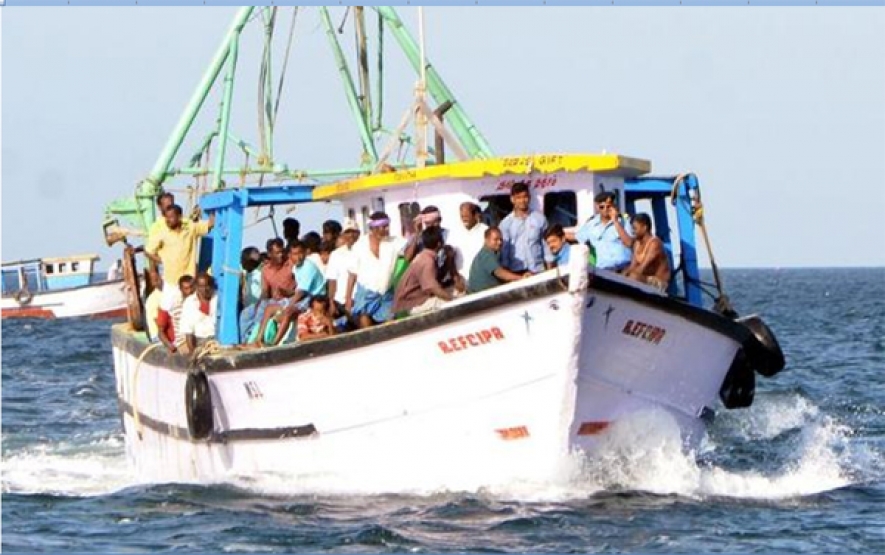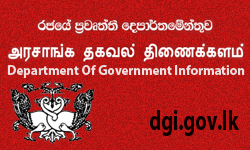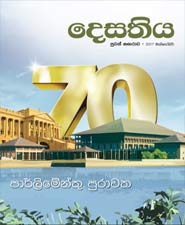Despite the shared history, culture and religion, India-Sri Lanka relations in the present context is discussed with regard to three key areas: the India’s position on the 13th Amendment to the Constitution of Sri Lanka, its stand with regard to the UNHRC resolution against Sri Lanka, and the fishermen issue in Tamil Nadu. One of the main topics of discussion between President Rajapaksa and the newly appointed Prime Minister of India Mr Narendra Modi was the 13th Amendment. Sri Lanka was advised to fully implement the 13th Amendment.
Among the many challenges that the Sri Lanka-India relationship faces at present, the Tamil Nadu fishermen issue has gained widespread attention. When Indian fishermen illegally violate the maritime boundary of Sri Lanka, the Sri Lankan Navy arrests and detains them. A few days ago, 50 such fishermen were arrested. According to news reports, 93 fishermen are currently under arrest and detention in Sri Lanka. In a context in which territorial boundaries are located in close proximity, these types of issues can happen. Failure to agree on a suitable solution by both countries will only result in continuation of this problem.
In finding a solution to the fishermen issue neither Sri Lanka nor the Government of India can ignore South India. During his recent visit to Colombo, Dr Subramaniam Swamy, one of the most influential policy advisors to the BJP Government said, “One weakness in India’s policy towards Sri Lanka is the veto power Tamil Nadu has.” Explaining further, he suggested that this situation will not remain the same under the current government. Even though this is a positive remark for Sri Lanka, one cannot ignore the fact that South India is Sri Lanka’s closest neighbour.
As the tension between South India and Sri Lanka heightened after the war, strong remarks were made by both sides. This affected the Sri Lanka-India relationship. In order to avoid such a situation in the future, it is important to count the concerns of Tamil Nadu in finding a solution to the fishermen issue.
One technical way of mitigating and minimising this issue could be by introducing strict regulations on fisheries’ practices such as having a vessel monitoring system (VMS) with transponders on board all the vessels. That gives the ability for the coast guards from both nations to monitor the path of the vessels. Geo fencing to determine the boundary between the two nations can also be used. This would help in preventing any illegal vessel from entering each other’s territorial water. This in turn will help to identify and minimise bottom trolling to protect the marine environment. Declaring the maximum amount of fish to catch would control excessive over fishing (Quota Management System). There are many technical measures that could ease tensions between the two countries.
India should have strong and close relations with all its neighbours to achieve its goal as a regional economic power. The SAARC meeting due in November would be a good opportunity for the newly appointed Indian Government to strengthen its bond and take some important decisions beneficial to both India and to the South Asian region as a whole.
In terms of the future goals of SAARC, it has been discussed that its future progress depends heavily on bordering countries such as Pakistan and India overcoming deep-rooted ethnic conflict. SAARC does have the potential to be a platform for increased communication and engagement over these issues. Prime Minister Modi’s proposal of having a common satellite for the SAARC region would be one initial step. As a Nepalese newspaper recently reported, the reduction in the soap industry ingredient import tariff in India would flood the Nepalese market with Indian soap, which could destroy the Nepalese soap manufacturers. While trade is one of the areas in which SAARC can strengthen its ties, it should be done in a way that is mutually beneficial and helpful to all the SAARC countries.
The behaviour of South Asian countries clearly indicate that they are derived more from a nationalistic agenda. While looking inward is important for a country, it should also note that improving and strengthening regional cooperation among the South Asian Nations is equally important in this globalised world.
This article was initially published at the Institute of Peace and Conflict Studies (IPCS) under Dateline Colombo.







